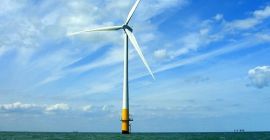Derive an expression for the current in a system like that in Figure 23.11, under the following conditions. The resistance between the rails is
R , the rails and the moving rod are identical in cross section
A and have the same resistivity
ρ . The distance between the rails is
l, and the rod moves at constant speed
v perpendicular to the uniform field
B. At time zero, the moving rod is next to the resistance
R.
